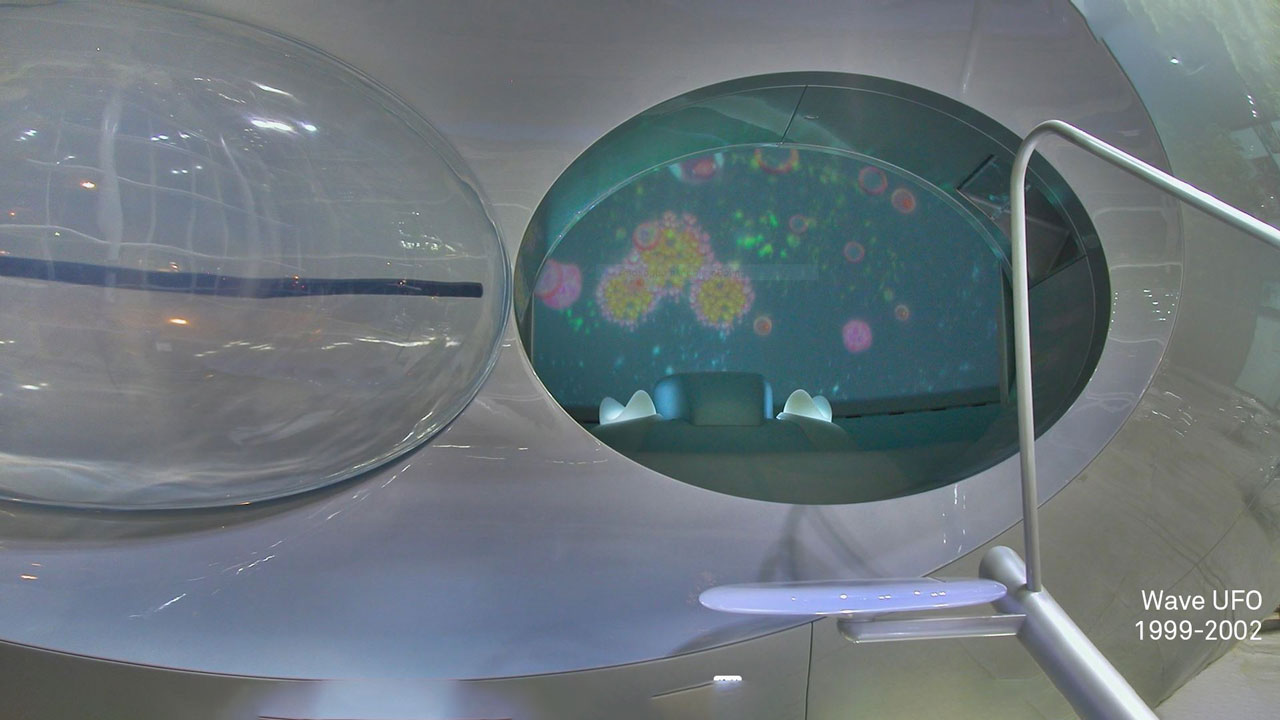VIDEO: Mariko Mori-Between the Ancient Gods and the Future
 “It seems to me that a lot of our conceptual ideas are already carried out in the past. And we’re at a point to inherit those ideas to the future.” Japanese artist Mariko Mori shares a look into her studio and home as well as her own artistic practice.
“It seems to me that a lot of our conceptual ideas are already carried out in the past. And we’re at a point to inherit those ideas to the future.” Japanese artist Mariko Mori shares a look into her studio and home as well as her own artistic practice.
Mariko Mori was born in Tokyo, Japan, but has lived for several years in both New York and London. Her mother was an art historian, and the young Mori was introduced to art through her. “When I was nine years old, I was looking through her collection of postcards of all the Western art,” Mori remembers: “Somehow I found Jackson Pollock’s no. 13 painting. And I was so thrilled. I didn’t know what abstract painting was, but I really felt freedom.”
Today, Mariko Mori works in various mediums, from photography and sculpture to installation and architecture. Her studio – and home – was the first architectural project she did. The house is located at Okinawa, a tropical island south of Japan. Inspired by the surrounding nature Mori wanted “the house to be an extension of that. A part of nature.” The untraditional shape of the house is eye-catching: “Originally, I was thinking of just building an architecture building, but it became more like a sculpture or form,” she says and continues: “The shape tried to accommodate the wind coming from the north.” This explains why the building is smaller in one part and bigger in another.
Having spent years traveling around the world, visiting pre-historical sites, Mori noticed that “humans are a very tiny portion of the whole nature. And I started to understand the dynamics of Earth.” She explains further: “When I visited pre-historical sites around the world, it was really this evidence of how our remote ancestors had a deep relationship with nature.” Not only is Mariko Mori inspired by the past, the future is very much also present in a lot of her work. Being a fan of the Japanese manga, Astro Boy, from a young age, she became fascinated with ideas of the future. “The future is something we can change. And the future is something that we can imagine.” Many of Mori’s works has a futuristic aesthetic: “The look is perhaps quite futuristic, but our mission is to inherit something that is treasured.”
“I was very much interested in 1970s conceptual, minimal art and artworks, which was very much influenced by Zen Buddhism.” Looking into her Japanese heritage has also had a huge influence on the work of Mori. “I thought that it’s very relevant for us to really introduce Zen Buddhism in a proper way.” She has done this by exploring the art of the traditional Japanese tea ceremony. “The direct research is reflected in my work, such as Zen Buddhism or Shinto traditions, as well as more prehistorical culture.”
“Creating things is really the true nature of humans.” To Mariko Mori, art is something that speaks directly to one’s soul. “If you stop creating things, then you’re not really using the most ability of your being. It’s a fundamental act,” she continues: “We are creating our world by using our creativity. Our future is really dependent on our art.”
Mariko Mori, born in Tokyo in 1967, is a Japanese multidisciplinary artist known for her photographs and videos depicting fantastic deities, robots, alien creatures, and spaceships. Mori’s hybridized future self is often presented in various guises and featuring traditional Japanese motifs. Mariko Mori’s work often explores themes of spirituality and transcendence with technology as a means of transcending and transforming consciousness and self. Mori’s work is featured in many public museum collections, including the Solomon R. Guggenheim Museum, Los Angeles County Museum of Art(LACMA), Museum of Contemporary Art, Chicago, and others. Mori’s solo exhibitions have been exhibited throughout the world, including at the Royal Academy of Arts in London, The Museum of Contemporary Art in Tokyo, The Brooklyn Museum of Art in New York, The Museum of Contemporary Art in Chicago, The Serpentine Gallery, in London, and The Dallas Museum of Art, in Dallas, USA. Several renowned museums have presented Mori’s solo exhibitions, as well as acquired Mori’s works in their collections, including Centre Georges Pompidou in Paris, The Prada Foundation in Milan, The Museum of Contemporary Art in Chicago, The Los Angeles County Museum of Art, in Los Angeles (USA), The Guggenheim Museum, in New York, The Israel Museum, in Jerusalem, The Museum of Modern Art, in New York, and the Louisiana Museum of Modern Art in Denmark.
Mariko Mori was interviewed by Jens H. Jensen at her studio in Miyako Island, Japan, in September 2022, Camera: Yudai Maruyama, Edited by: Malte Bruun Fals, Produced by Christian Lund, © Louisiana Channel, Louisiana Museum of Modern Art, 2023. Louisiana Channel is supported by Den A.P. Møllerske Støttefond, Ny Carlsbergfondet, C.L. Davids Fond og Samling, and Fritz Hansen
